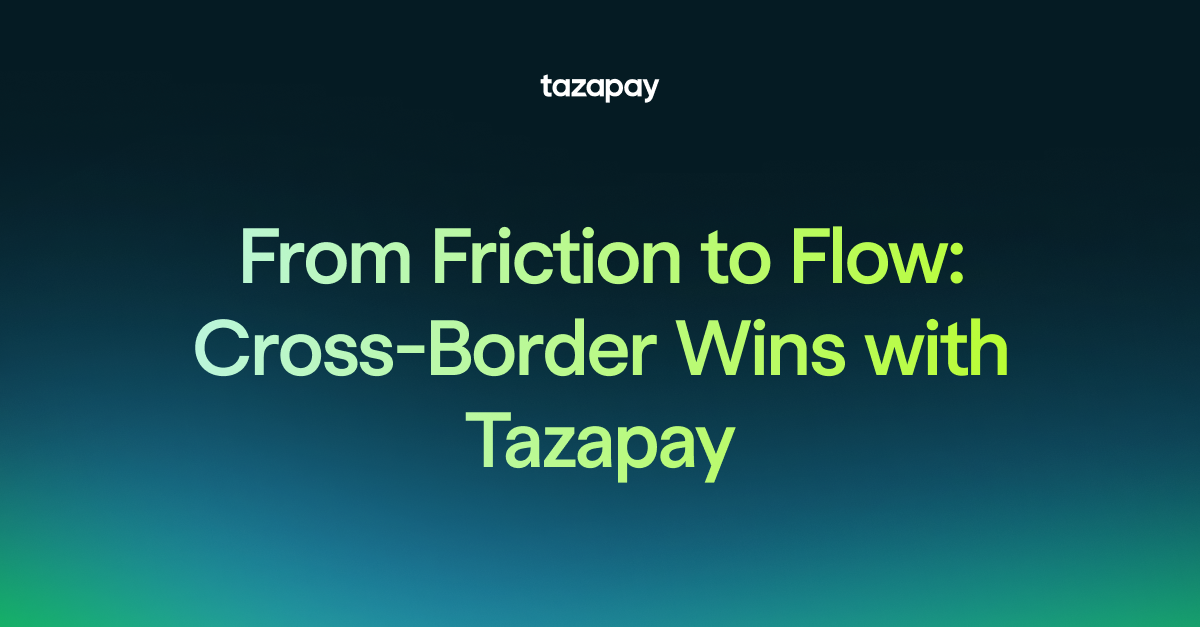India’s B2B e-commerce market continues to surge ahead in 2025, becoming a hotbed of opportunity for both local and global players. With digital transformation accelerating across all industries, the adoption of modern payment infrastructure is playing a crucial role in shaping India’s business-to-business (B2B) ecosystem.
For businesses planning to expand into India’s booming online B2B space, understanding the evolving payment landscape is essential. In this post, we explore the latest payment trends, preferred methods, regulatory updates, and what to expect when entering this fast-growing market.
A Look Back and Ahead: Market Projections
A RedSeer report projected back in 2019 that India’s B2B e-commerce market would outpace B2C with an exceptional CAGR of 80%, aiming to hit USD 60 billion by 2025. Fast forward to today, and that forecast has largely held up. India's B2B payments market is now a focal point of innovation and investment, supported by strong internet infrastructure, rising digitization, and favorable government policies.
The payment gateway sector, in parallel, has shown consistent momentum. According to a Business Wire report, India’s payment gateway market was set to register a CAGR of 15% through 2025. This growth has been driven by increased adoption of digital commerce, evolving regulatory frameworks, and the rise of real-time payment rails like UPI.
Current B2B Payment Preferences in India
India's payment behavior in the B2B e-commerce space continues to evolve, driven by convenience, mobile adoption, and growing trust in digital services. Here's how businesses and buyers prefer to transact online in 2025:
1. Cards
Credit and debit cards still hold significant sway, particularly for automated B2B transactions like payroll, reimbursements, and vendor payouts.
Commercial cards are gaining traction among SMEs, despite lingering concerns about high transaction fees.
As of February 2025, HDFC Bank continues to lead India's credit card market with a 22% share, followed by SBI Card at 19%, ICICI Bank at 17%, and Axis Bank at 14%.
2. Digital Wallets & UPI
Digital wallets have become second nature for Indian users.
Unified Payments Interface (UPI) dominates real-time transfers for both P2P and B2B payments. Its seamless interoperability and previously zero-MDR policy (now re-evaluated) helped skyrocket usage.
UPI 2.0, UPI Lite, and Credit on UPI features are making it even more relevant for B2B transactions.
As of April 2025, UPI processes over 13.2 billion transactions per month.
3. Bank Transfers
While not the top choice for B2B e-commerce, bank transfers remain relevant for large-value or bulk transactions.
Traditional NEFT, RTGS, and IMPS services are now integrated into digital platforms to ensure faster settlement and reduce paperwork.
📊 Comparison Table: Online Payment Methods in India (2025)
Emerging Trends in India’s Digital Payment Ecosystem
1. UPI as the New Standard
UPI has become the foundation for digital commerce in India. With innovations like UPI AutoPay, UPI Lite, and Credit on UPI, it now supports recurring billing and even offline-first transactions—making it more adaptable to B2B needs.
2. Cards Adapting to Digital
Global operators like Visa and Mastercard are actively localizing their services.
Soft POS (tap-to-phone) features allow merchants and MSMEs to accept card payments using NFC smartphones—without costly hardware.
Example: Mastercard’s collaboration with Axis Bank and Worldline to roll out contactless payment acceptance for MSMEs.
3. Regulatory Vigilance from the RBI
The Reserve Bank of India (RBI) continues its push for secure, compliant digital payments (Source).
Key updates include:
- Mandatory tokenization of card data
- User-configurable transaction limits
- Enhanced fraud detection protocols, especially for international transactions
- Ongoing KYB (Know Your Business) enforcement for platforms processing B2B payments
Key Considerations for B2B Platforms Entering India
If you’re building or scaling a B2B e-commerce platform in India, here are a few essentials:
- Include Local Payment Methods: UPI, RuPay, and NetBanking are expected by Indian users
- Offer Card Payment Options: Ensure smooth checkout with commercial and consumer cards
- Enable Mobile Wallets: Especially important for mobile-first buyers in Tier 2 and Tier 3 cities
- Keep Up with RBI Rules: Ensure your payment partner is compliant with KYB, tokenization, fraud checks
- Communicate Transparently: Use virtual accounts or named payout channels to reduce confusion
How Tazapay Supports B2B Payments in India
Tazapay is a trusted international payment provider for businesses operating in India and across borders. Here's how we simplify B2B payments:
- ✅ Local Payment Acceptance: UPI, NetBanking, wallets, and card support
- ✅ Global FX Advantage: Competitive INR conversion rates
- ✅ Full Regulatory Alignment: KYB, card tokenization, transaction limit handling
- ✅ Global Payment Reach: Localization in 173+ countries and 80+ markets
Whether you're a SaaS company billing global clients, a cross-border marketplace collecting in India, or an enterprise scaling internationally—Tazapay helps you move money faster, safer, and smarter.
Conclusion
India’s B2B payments landscape in 2025 is more digitized, efficient, and innovation-driven than ever before. From real-time UPI adoption and commercial card enablement to regulatory clarity and mobile-first infrastructure—the momentum is clear.
For international businesses eyeing India, the opportunity is massive—but success depends on aligning with the right infrastructure and payment partner.
Tazapay makes that journey seamless, secure, and scalable—so you can focus on growth, not compliance.
FX losses occur when funds are converted prematurely or at unfavorable rates, reducing your overall revenue. These small gaps compound significantly across multiple transactions.
Virtual accounts let you collect and hold funds in the same currency without immediate conversion. You can convert or pay out later when rates are more favorable.
No. Tazapay allows businesses to open named virtual accounts in 35+ currencies without the need for local entity registration.
Tazapay supports collections in 35+ currencies and payouts in 100+ currencies through local bank rails or SWIFT.
Yes. You can initiate global payouts directly from your virtual account balances — all managed in one unified dashboard.
Tazapay operates under licenses and registrations with MAS (Singapore), FINTRAC (Canada), AUSTRAC (Australia), and VASP (Lithuania).







.png)

.png)



